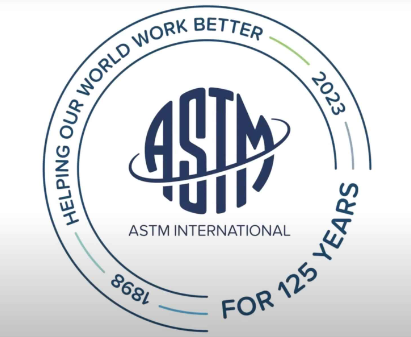Global standards organization ASTM International’s additive manufacturing technologies committee (F42) has released the standard specification for maraging steel in powder bed fusion (PBF).
Maraging steel belongs to a category of precipitation-hardened steel that gains strength through the aging heat treatment process, making it highly advantageous for various industries including automotive, sporting goods, and aerospace. The upcoming standard, currently identified as WK82609, will be published under the name ASTM F3607. Notably, David Rosen, a member of ASTM, has emphasized the significance of this specification in enabling users to establish precise requirements and ensure the desired properties of additively manufactured maraging steel components.
“Maraging steel has high strength and toughness without losing ductility, weldability, and dimensional stability,” said Rosen, Principal Scientist at the Agency for Science, Technology and Research. “If maraging steel is used to replace lower grade steels, resulting parts may be lighter and stronger, which can have positive benefits on fuel efficiency of cars and airplanes, for example.”

Maraging steel: A high-performance material for 3D printing
Maraging steel, an alloy composed of iron combined with elements such as nickel, cobalt, molybdenum, titanium, and aluminum, stands out for its strength, toughness, and corrosion resistance. These properties make it suitable for 3D printing applications. With its high tensile strength and toughness, maraging steel is suitable for parts that require durability and resilience to withstand impact or shock loading. Its corrosion resistance ensures longevity and reliability, especially in challenging environments. Additionally, maraging steel exhibits superior machinability, allowing for precise shaping and machining to meet high tolerances required by 3D printed components.
Maraging steel finds applications in aerospace components, high-performance tools and dies, ordnance components, and more. In aerospace, it is used to print strong and durable parts like landing gear and wing fittings. For high-performance tools and dies, maraging steel can withstand heavy loads and stress. It is also utilized in ordnance components such as armor plates and projectiles, providing strength and corrosion resistance.

ASTM International’s efforts to advance the 3D printing sector
ASTM International released its Strategic Guide: Additive Manufacturing In-Situ Technology Readiness report. This detailed report was the outcome of a workshop series held in June 2022. The workshop was organized by the ASTM Additive Manufacturing Center of Excellence (AM CoE) and sponsored by America Makes and NASA. The primary focus of the report was to comprehend the challenges and gaps present in in-situ technology. It provided an in-depth analysis of the discussions, outcomes, and proposed solutions derived from the workshops, aimed at tackling crucial aspects of the technology.
ASTM International launched the Additive Manufacturing Quality (AMQ) Certification program for manufacturers utilizing metal additive manufacturing. The AMQ Certification program was specifically developed to ensure the consistent production of high-quality parts by AM manufacturers. It was founded upon two ISO and ASTM standards and required manufacturers to comply with requirements for purchased AM parts, establish an AM-specific quality management system, and maintain control over the operation and production of the metal PBF process. Several AM companies, including ST Engineering Land Systems (Singapore), Morf3D and MIMO TECHNIK (California), and Sintavia (Florida), were certified under this program.
What does the future of 3D printing for the next ten years hold?
What engineering challenges will need to be tackled in the additive manufacturing sector in the coming decade?
To stay up to date with the latest 3D printing news, don’t forget to subscribe to the 3D Printing Industry newsletter or follow us on Twitter, or like our page on Facebook.
While you’re here, why not subscribe to our Youtube channel? Featuring discussion, debriefs, video shorts, and webinar replays.
Are you looking for a job in the additive manufacturing industry? Visit 3D Printing Jobs for a selection of roles in the industry.
Featured image shows ASTM International develops a new standard for maraging steel in PBF. Image via ASTM International.



